Feature: From one displacement to another: Gazans fleeing Rafah cram into squalid areas

Displaced Palestinians are seen in the Maghazi refugee camp in central Gaza, on June 4, 2024. On May 7, the Israeli military expanded its operations in Rafah, directing over 1.5 million Palestinians to move to Khan Younis and other central Gaza areas. The United Nations Relief and Works Agency for Palestine Refugees in the Near East (UNRWA) estimates that these areas now shelter approximately 1.7 million people. (Photo by Marwan Dawood/Xinhua)
GAZA, June 4 (Xinhua) -- Ahmed Arfan, a displaced Palestinian from Rafah, has set up a temporary tent in Khan Younis in southern Gaza for his six-member family.
"I was forced to sleep in the open for several days. I had to distribute my children and wife among my relatives' tents until I could set up our own," Arfan, 39, told Xinhua.
After a terrible ordeal, Arfan found a small area near a landfill in Khan Younis' Mawasi area to pitch his tent. "All day long we suffer from the foul smell of the waste. Mosquitoes and insects plague us day and night, but I have no choice. There are many displaced people here and no other place for us," he said.
On May 7, the Israeli army expanded its military operation in Rafah, ordering more than 1.5 million Palestinians sheltering there to head to Khan Younis and other central areas of Gaza. "The army claimed that the security areas would have all housing and living requirements. Still, we have found nothing. Our suffering has only doubled," Arfan complained.
Like thousands of other displaced people, Arfan must walk several kilometers daily to fetch water and buy food at inflated prices.
The situation is compounded by the inability of the UN Relief and Works Agency for Palestine Refugees (UNRWA) to cope with the high number of refugees in Khan Younis and other areas. "UNRWA cannot handle the number of displaced people here," Arfan added.
Munira al-Sayed, another displaced woman, has also been forced to sleep in her relatives' tent in Deir al-Balah, central Gaza. "This is the third time I've been displaced with my two children after my husband was killed in an Israeli airstrike in Al-Nuseirat," the 27-year-old mother told Xinhua, her eyes brimming with tears.
Al-Sayed depends entirely on humanitarian aid from UNRWA, but the lack of distribution in her area forces her to buy food on the black market. "I don't have enough money. My kids and I are eating only one meal a day, which is affecting our health," she said.
For about 15 days, Hassan Ismail, another displaced Palestinian, has not received any assistance from UNRWA. "I cannot blame UNRWA because the number of refugees is very high, and the organization faces many challenges in meeting our needs," the 42-year-old father of five said.
"My youngest son is an infant suffering from malnutrition for several months. He needs baby milk regularly, but there is a shortage in the markets," Ismail said worriedly.
UNRWA stated that it continues to provide essential services despite increasing challenges and dire conditions. The agency estimates that the Khan Younis area and central Gaza are now sheltering about 1.7 million people, stressing that its humanitarian work "continues to shrink."
Palestinian families are living in "inhumane conditions with a scarcity of water, food, and supplies," UNRWA said, calling for an immediate end to the blockade.
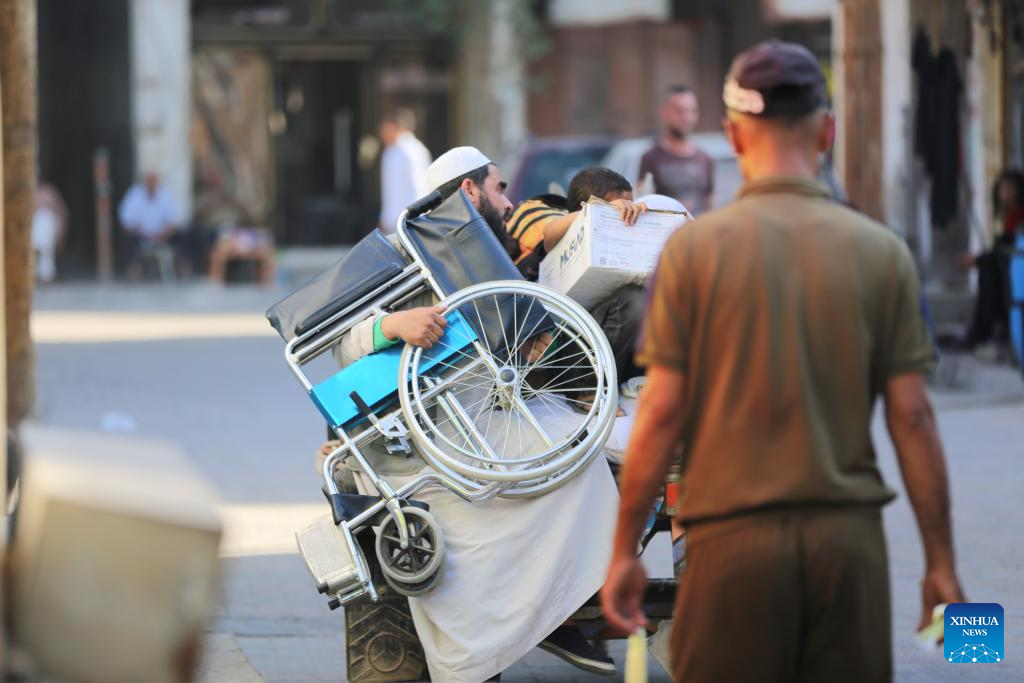
Displaced Palestinians are seen in the Maghazi refugee camp in central Gaza, on June 4, 2024. On May 7, the Israeli military expanded its operations in Rafah, directing over 1.5 million Palestinians to move to Khan Younis and other central Gaza areas. The United Nations Relief and Works Agency for Palestine Refugees in the Near East (UNRWA) estimates that these areas now shelter approximately 1.7 million people. (Photo by Marwan Dawood/Xinhua)
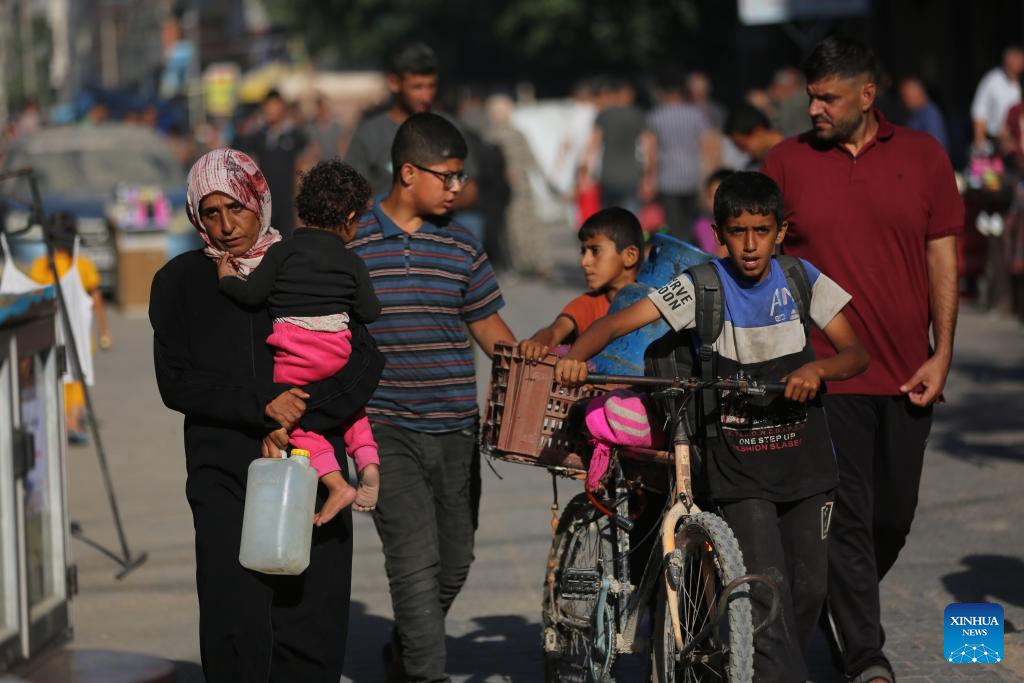
Displaced Palestinians are seen in the Maghazi refugee camp in central Gaza, on June 4, 2024. On May 7, the Israeli military expanded its operations in Rafah, directing over 1.5 million Palestinians to move to Khan Younis and other central Gaza areas. The United Nations Relief and Works Agency for Palestine Refugees in the Near East (UNRWA) estimates that these areas now shelter approximately 1.7 million people. (Photo by Marwan Dawood/Xinhua)
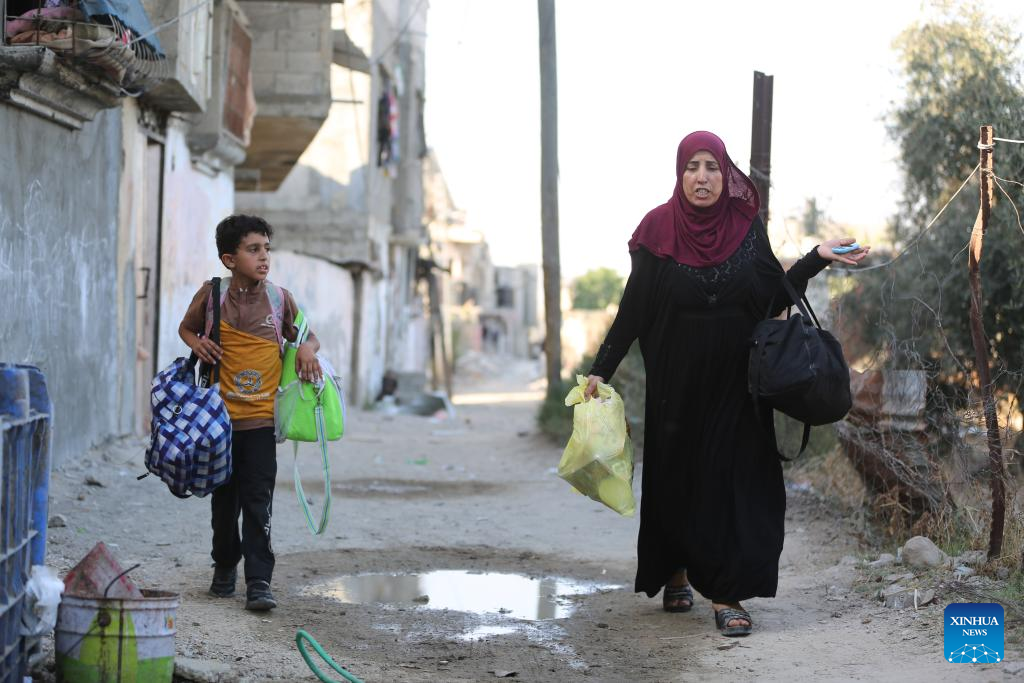
Displaced Palestinians are seen in the Maghazi refugee camp in central Gaza, on June 4, 2024. On May 7, the Israeli military expanded its operations in Rafah, directing over 1.5 million Palestinians to move to Khan Younis and other central Gaza areas. The United Nations Relief and Works Agency for Palestine Refugees in the Near East (UNRWA) estimates that these areas now shelter approximately 1.7 million people. (Photo by Marwan Dawood/Xinhua)
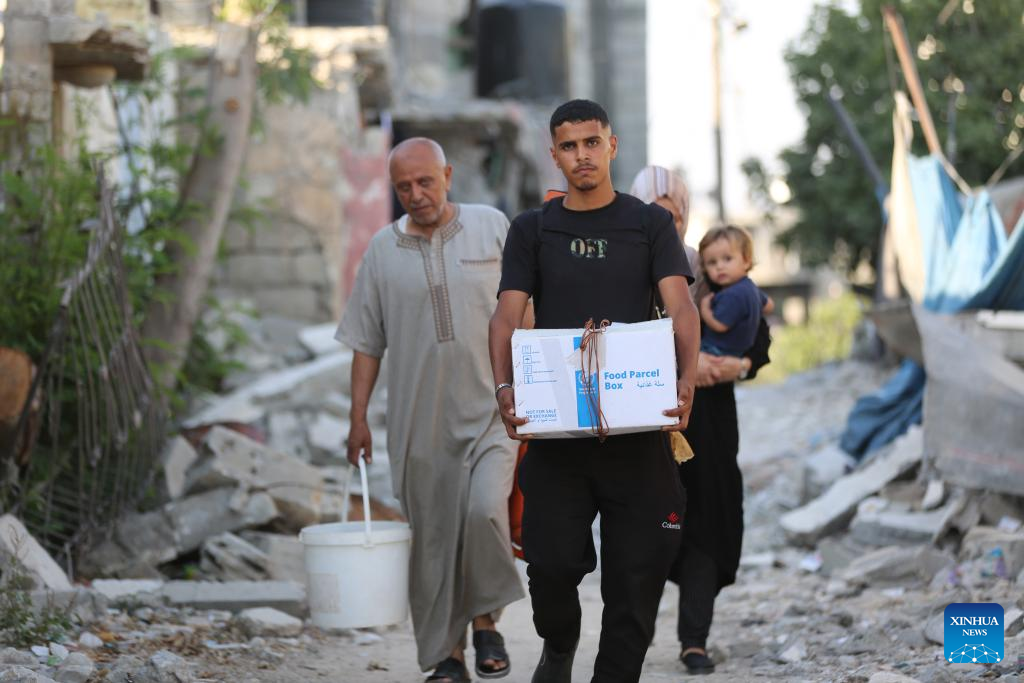
Displaced Palestinians are seen in the Maghazi refugee camp in central Gaza, on June 4, 2024. On May 7, the Israeli military expanded its operations in Rafah, directing over 1.5 million Palestinians to move to Khan Younis and other central Gaza areas. The United Nations Relief and Works Agency for Palestine Refugees in the Near East (UNRWA) estimates that these areas now shelter approximately 1.7 million people. (Photo by Marwan Dawood/Xinhua)
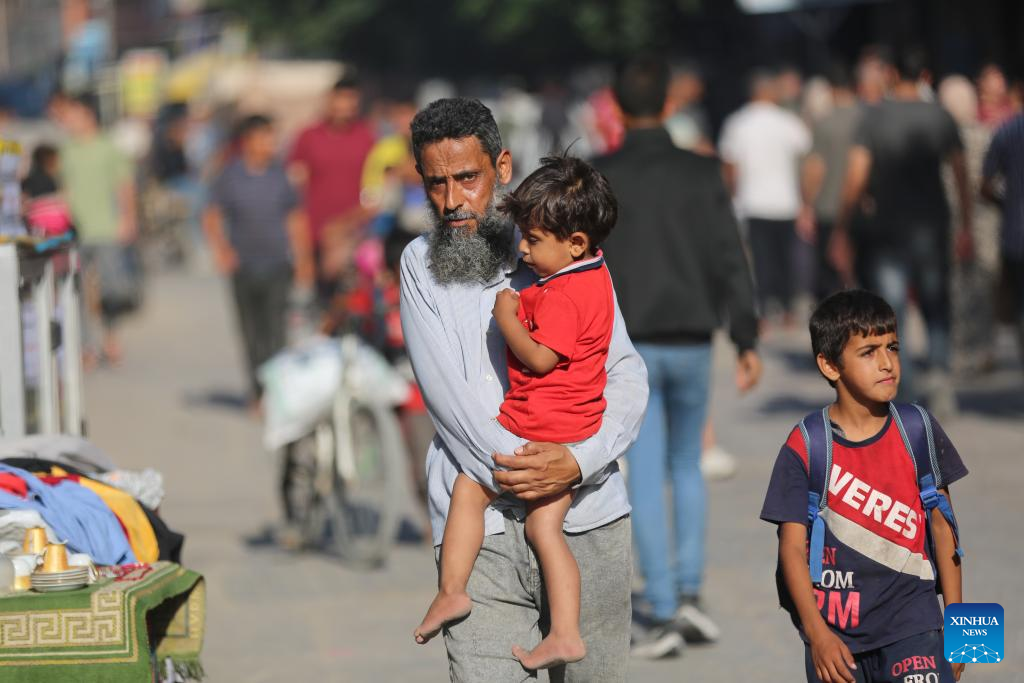
Displaced Palestinians are seen in the Maghazi refugee camp in central Gaza, on June 4, 2024. On May 7, the Israeli military expanded its operations in Rafah, directing over 1.5 million Palestinians to move to Khan Younis and other central Gaza areas. The United Nations Relief and Works Agency for Palestine Refugees in the Near East (UNRWA) estimates that these areas now shelter approximately 1.7 million people. (Photo by Marwan Dawood/Xinhua)
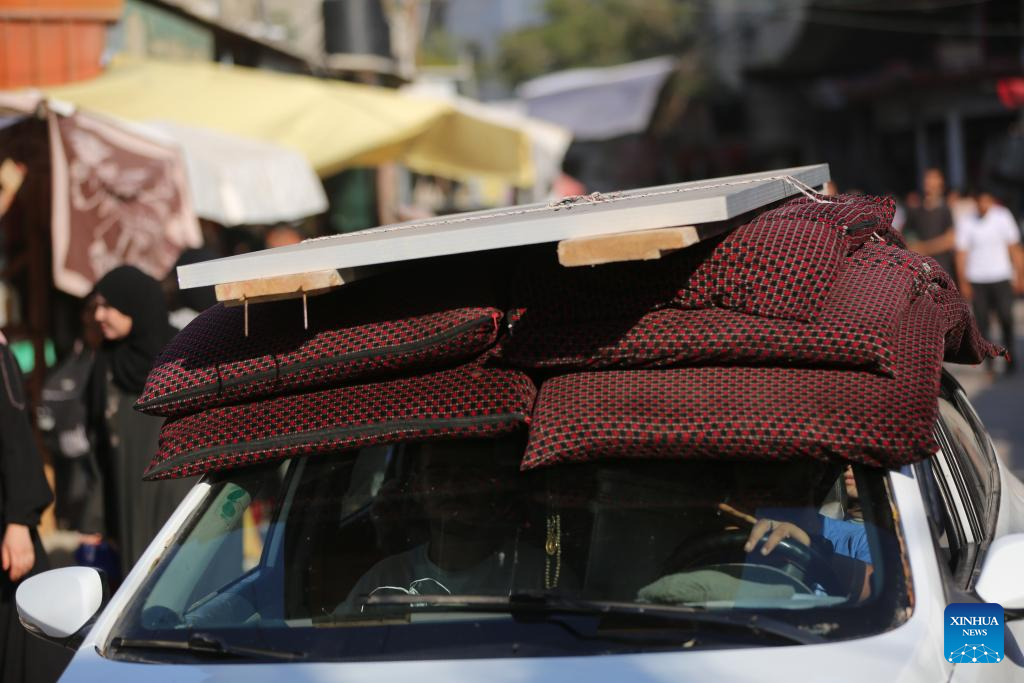
Displaced Palestinians are seen in the Maghazi refugee camp in central Gaza, on June 4, 2024. On May 7, the Israeli military expanded its operations in Rafah, directing over 1.5 million Palestinians to move to Khan Younis and other central Gaza areas. The United Nations Relief and Works Agency for Palestine Refugees in the Near East (UNRWA) estimates that these areas now shelter approximately 1.7 million people. (Photo by Marwan Dawood/Xinhua)

Temporary tents for displaced Palestinians are seen in the Mawasi area in the southern Gaza Strip city of Khan Younis, on June 4, 2024. On May 7, the Israeli army expanded its military operation in Rafah, ordering more than 1.5 million Palestinians sheltering there to head to Khan Younis and other central areas of Gaza. (Photo by Rizek Abdeljawad/Xinhua)
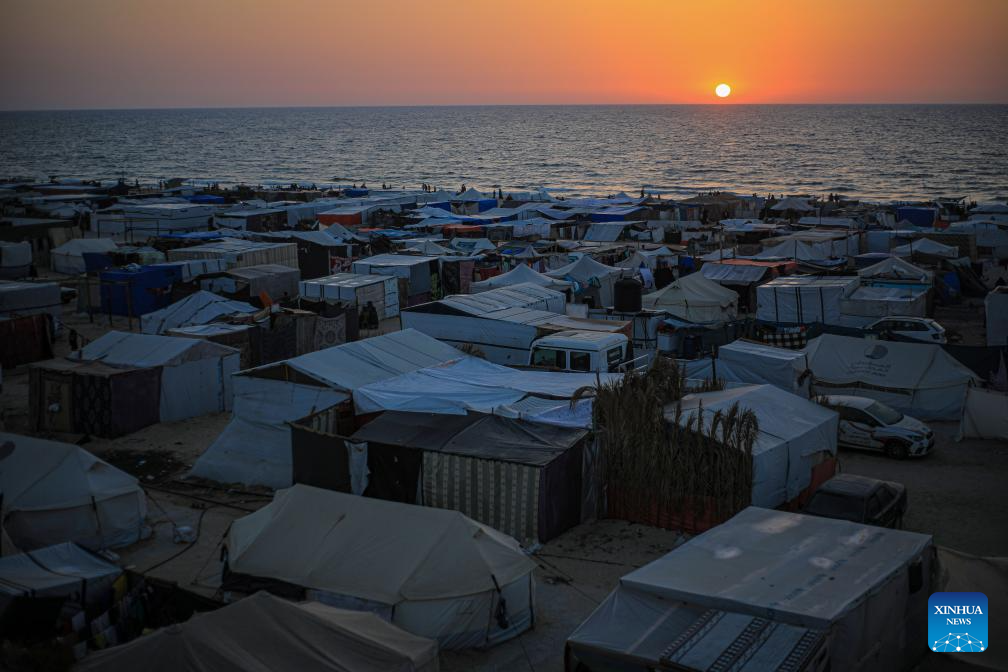
Temporary tents for displaced Palestinians are seen in the Mawasi area in the southern Gaza Strip city of Khan Younis, on June 4, 2024. On May 7, the Israeli army expanded its military operation in Rafah, ordering more than 1.5 million Palestinians sheltering there to head to Khan Younis and other central areas of Gaza. (Photo by Rizek Abdeljawad/Xinhua)
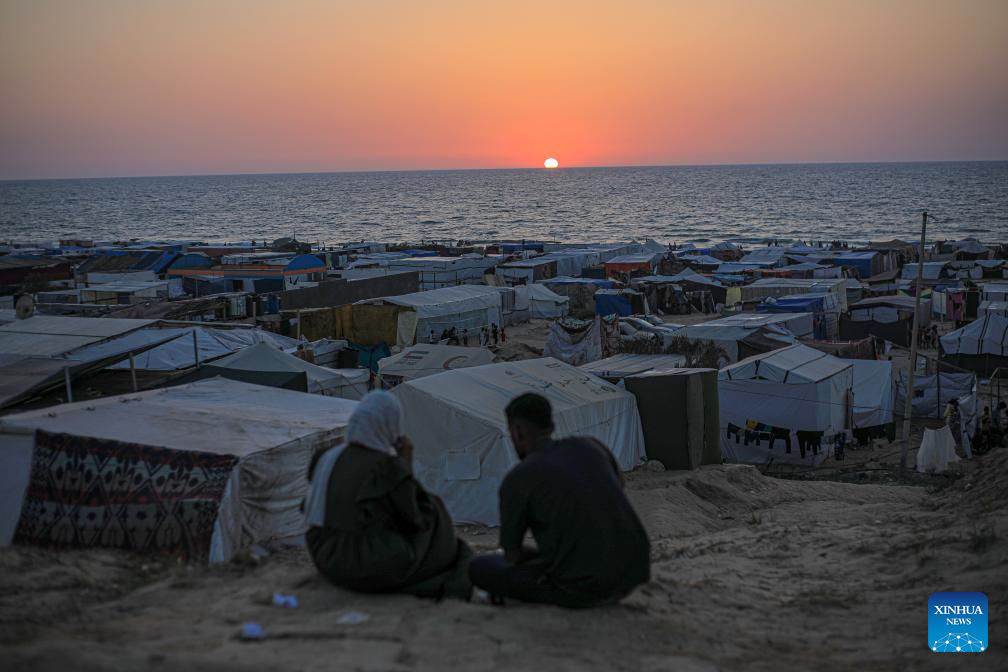
Temporary tents for displaced Palestinians are seen in the Mawasi area in the southern Gaza Strip city of Khan Younis, on June 4, 2024. On May 7, the Israeli army expanded its military operation in Rafah, ordering more than 1.5 million Palestinians sheltering there to head to Khan Younis and other central areas of Gaza. (Photo by Rizek Abdeljawad/Xinhua)
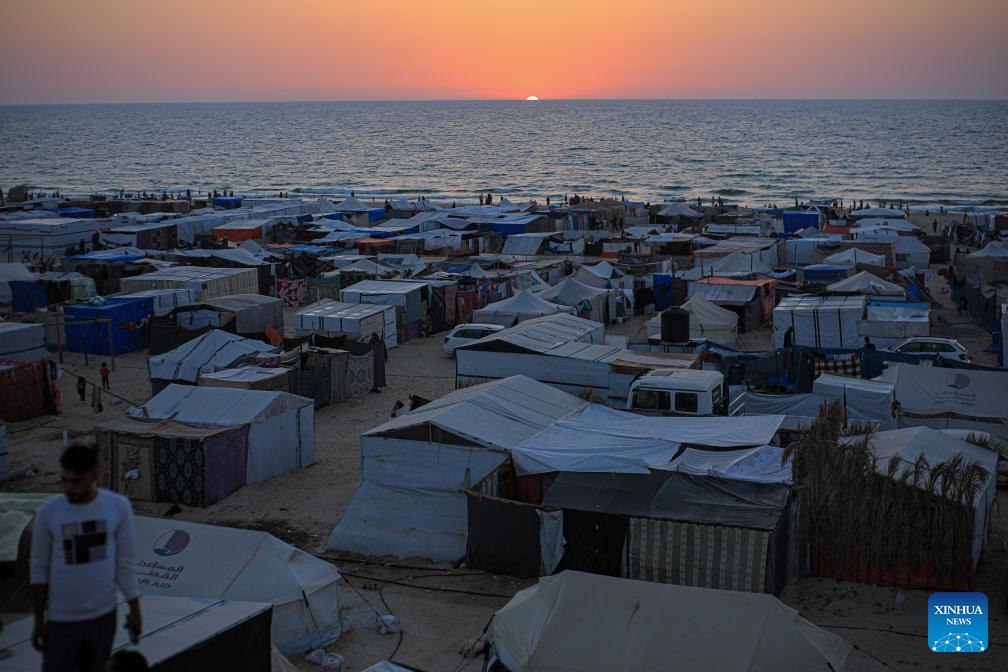
Temporary tents for displaced Palestinians are seen in the Mawasi area in the southern Gaza Strip city of Khan Younis, on June 4, 2024. On May 7, the Israeli army expanded its military operation in Rafah, ordering more than 1.5 million Palestinians sheltering there to head to Khan Younis and other central areas of Gaza. (Photo by Rizek Abdeljawad/Xinhua)

Temporary tents for displaced Palestinians are seen in the Mawasi area in the southern Gaza Strip city of Khan Younis, on June 4, 2024. On May 7, the Israeli army expanded its military operation in Rafah, ordering more than 1.5 million Palestinians sheltering there to head to Khan Younis and other central areas of Gaza. (Photo by Rizek Abdeljawad/Xinhua)
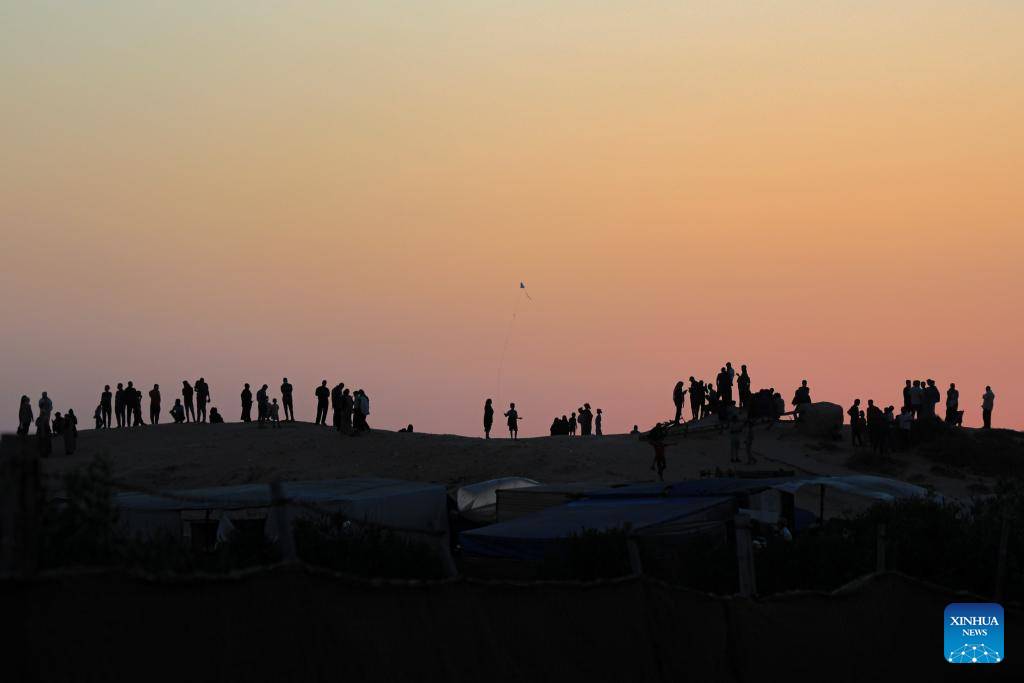
People are silhouetted against sunset above temporary tents for displaced Palestinians in the Mawasi area in the southern Gaza Strip city of Khan Younis, on June 4, 2024. On May 7, the Israeli army expanded its military operation in Rafah, ordering more than 1.5 million Palestinians sheltering there to head to Khan Younis and other central areas of Gaza. (Photo by Rizek Abdeljawad/Xinhua)

People stand above temporary tents for displaced Palestinians in the Mawasi area in the southern Gaza Strip city of Khan Younis, on June 4, 2024. On May 7, the Israeli army expanded its military operation in Rafah, ordering more than 1.5 million Palestinians sheltering there to head to Khan Younis and other central areas of Gaza. (Photo by Rizek Abdeljawad/Xinhua)
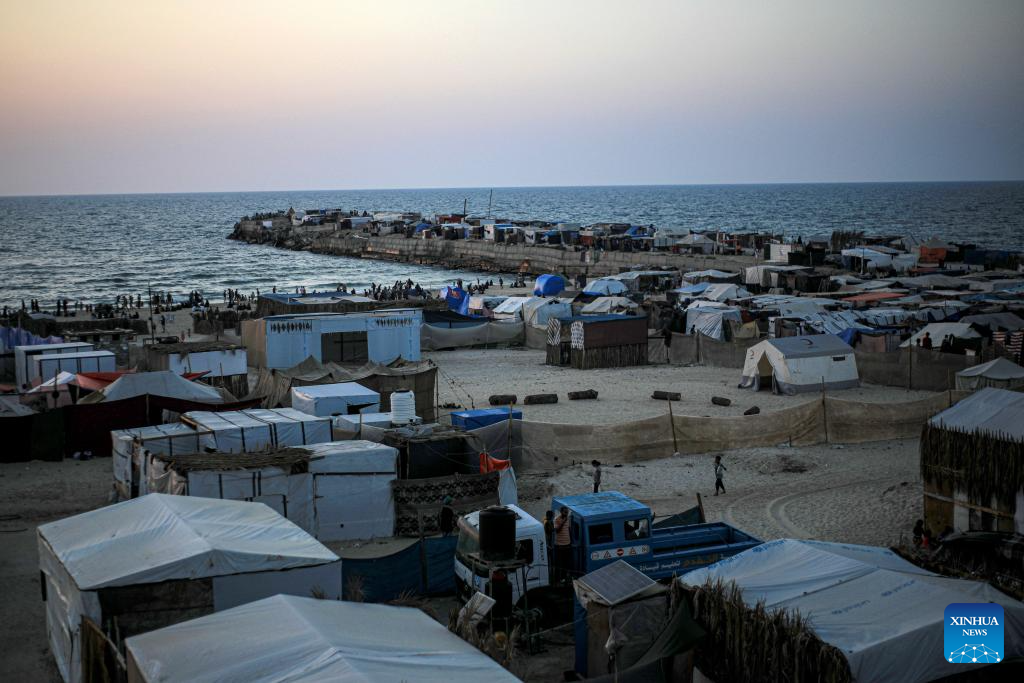
Temporary tents for displaced Palestinians are seen in the Mawasi area in the southern Gaza Strip city of Khan Younis, on June 4, 2024. On May 7, the Israeli army expanded its military operation in Rafah, ordering more than 1.5 million Palestinians sheltering there to head to Khan Younis and other central areas of Gaza. (Photo by Rizek Abdeljawad/Xinhua)

Temporary tents for displaced Palestinians are seen in the Mawasi area in the southern Gaza Strip city of Khan Younis, on June 4, 2024. On May 7, the Israeli army expanded its military operation in Rafah, ordering more than 1.5 million Palestinians sheltering there to head to Khan Younis and other central areas of Gaza. (Photo by Rizek Abdeljawad/Xinhua)
Photos
Related Stories
- Palestinian death toll in Gaza rises to 36,224
- Israel gains operational control of Philadelphi Corridor along Gaza-Egypt border: spokesman
- U.S. State Department official reportedly resigns over obstruction of aid to Gaza
- Academic workers at UC Los Angeles strike over university's handling of pro-Palestinian protests
- 21 Palestinians killed in Israeli strike on Rafah displacement tents
Copyright © 2024 People's Daily Online. All Rights Reserved.









